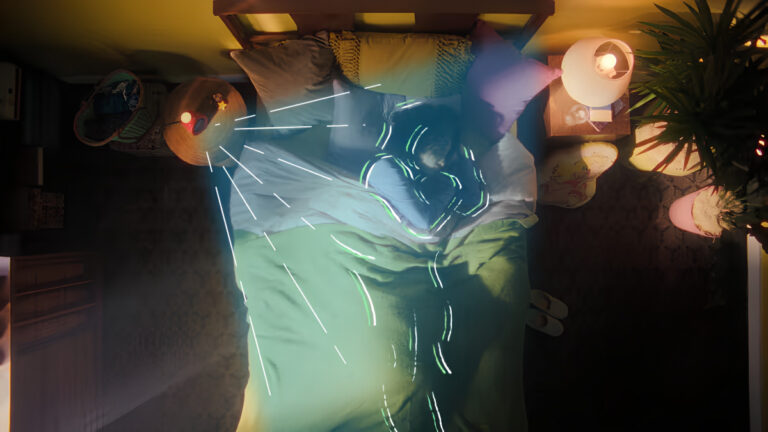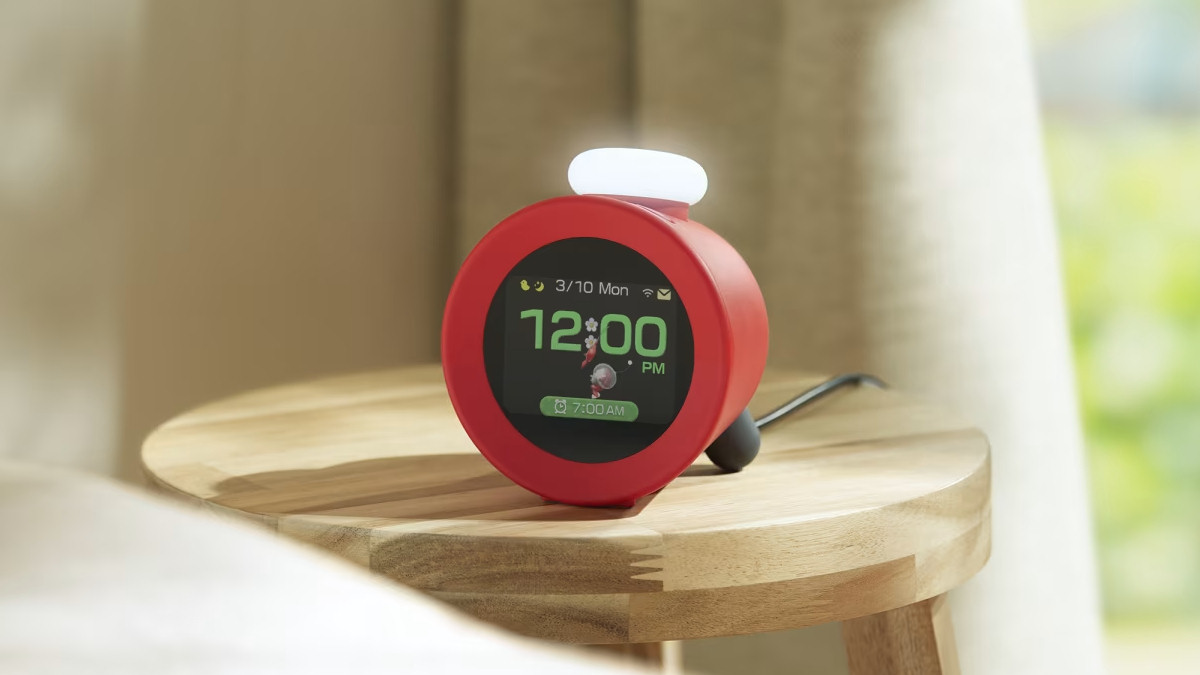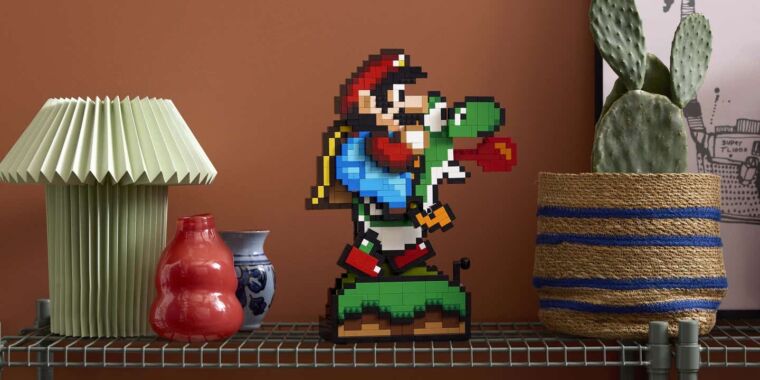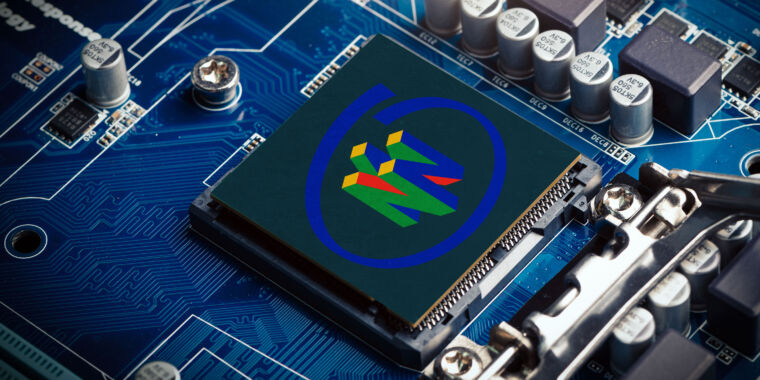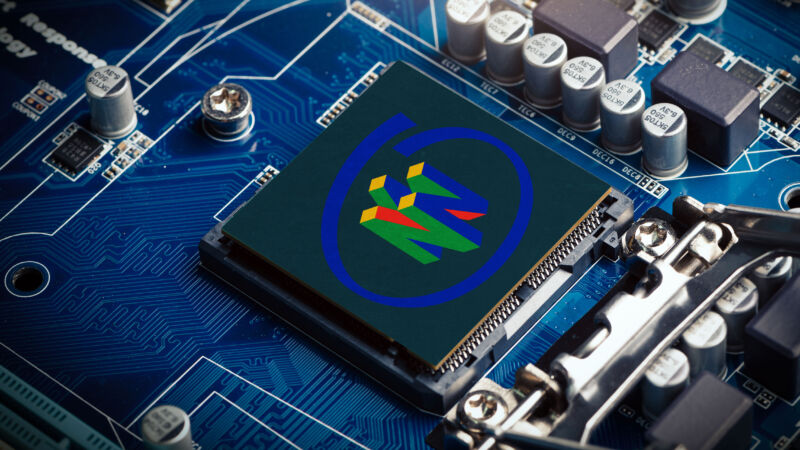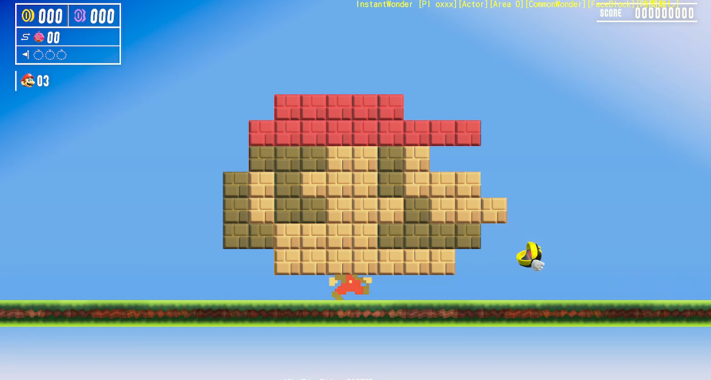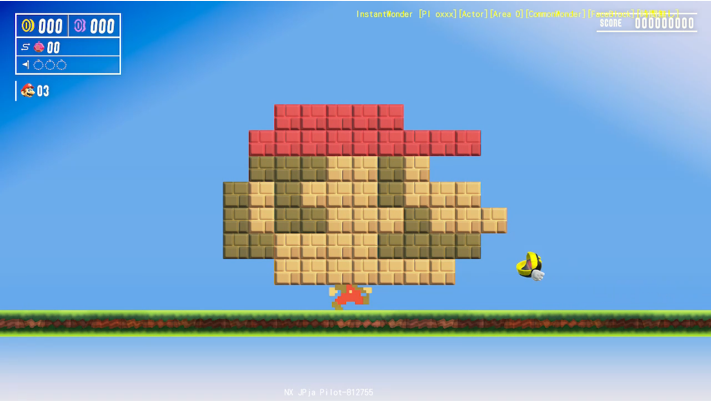Nintendo’s new clock tracks your movement in bed
The motion detectors reportedly work with various bed sizes, from twin to king. As users shift position, the clock’s display responds by moving on-screen characters from left to right and playing sound effects from Nintendo video games based on different selectable themes.
A photo of Nintendo Sound Clock Alarmo. Credit: Nintendo
The Verge’s Chris Welch examined the new device at Nintendo’s New York City store shortly after its announcement, noting that setting up Alarmo involves a lengthy process of configuring its motion-detection features. The setup cannot be skipped and might prove challenging for younger users. The clock prompts users to input the date, time, and bed-related information to calibrate its sensors properly. Even so, Welch described “small, thoughtful Nintendo touches throughout the experience.”
Themes and sounds
Beyond motion tracking, the clock has a few other tricks up its sleeve. Its screen brightness adjusts automatically based on ambient light levels, and users can control Alarmo through buttons on top, including a large dial for navigation and selection.
The device’s full-color rectangular display shows the time and 35 different scenes that feature animated Nintendo characters from games like the aforementioned Super Mario Odyssey, The Legend of Zelda: Breath of the Wild, and Splatoon 3, as well as Pikmin 4 and Ring Fit Adventure.
A promotional image for a Super Mario Odyssey theme for the Nintendo Sound Clock Alarmo. Nintendo
Alarmo also offers sleep sounds to help users doze off. Nintendo plans to release additional downloadable sounds and themes for the device in the future using its built-in Wi-Fi capabilities, which are accessible after linking a Nintendo account. The Nintendo website mentions upcoming themes for Mario Kart 8 Deluxe and Animal Crossing: New Horizons in particular.
As of today, Nintendo Online members can order an Alarmo online, and as mentioned above, Nintendo says the clock will be available through other retailers in January 2025.
Nintendo’s new clock tracks your movement in bed Read More »
